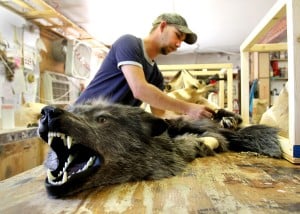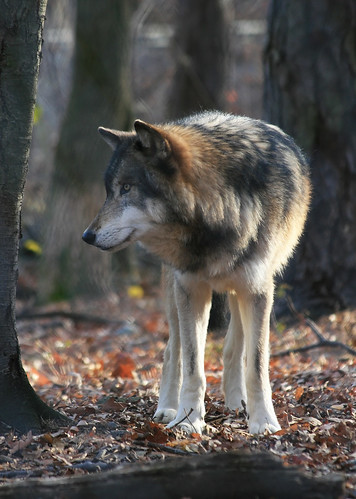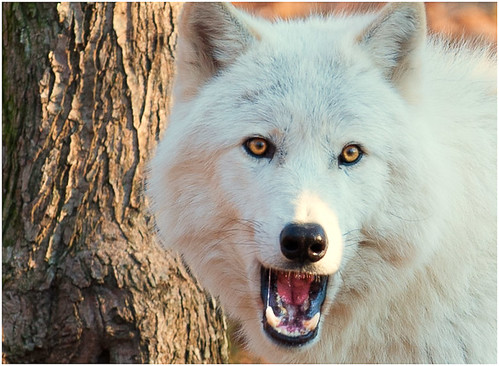
Daniel Stahler/Associated Press
Researchers have determined that black-coated wolves, like these in
Yellowstone National Park, got their distinctive color from dogs.
Although common in many species, melanism in dogs follows a unique genetic pathway, said Dr. Gregory S. Barsh, a professor of genetics and pediatrics at the Stanford University School of Medicine and the senior author of the paper.
Last year, Dr. Barsh and his laboratory identified a gene mutation responsible for the protein beta-defensin 3, which regulates melanism in dogs. After finding that the same mutation was responsible for black wolves and black coyotes in North America, and for black wolves from the Italian Apennines where wolves have recently hybridized with free-ranging dogs, the researchers set out to discover where and when the mutation evolved.
Comparing large sections of wolf, dog and coyote genomes, Dr. Barsh and his colleagues concluded that the mutation arose in dogs 12,779 to 121,182 years ago, with a preferred date of 46,886 years ago. Because the first domesticated dogs are estimated to date back just 15,000 to 40,000 years ago in East Asia, the researchers said that they could not determine with certainty whether the mutation arose first in wolves that predate that time, or in dogs at an early date in their domestication.
Robert K. Wayne, an evolutionary biologist at the University of California, Los Angeles, who studies canine evolution and is a co-author on the Science paper, said in an interview that he believed the mutation occurred first in dogs. But even if it arose first in wolves, he said, it was passed on to dogs who brought it to the New World and then passed it to wolves and coyotes soon after their arrival.
Dr. Wayne and his colleagues have dated the presence of dogs in Alaska to about 14,000 years ago and are now checking ancient dog remains from across the Americas for the mutation.
The researchers concluded that the mutation is subject to positive selection, meaning that it serves some adaptive purpose. Cross-breeding produces offspring with one set of genes from each parent, in this case a dog and a wolf. If all subsequent breeding takes place among wolves, the dog genes eventually vanish, unless one or more of them helps the organism survive.
Scientists have not yet identified the mutation’s purpose, but they suggested that its association with forested habitats meant the prevalence of melanism should increase as forests expand northward.
In an interview, Dr. Barsh observed that beta-defensin is involved in providing immunity to viral and bacterial skin infections, which might be more common in forested, warmer environments.
Marc Bekoff, a behavioral ethologist from the University of Colorado.
source






































